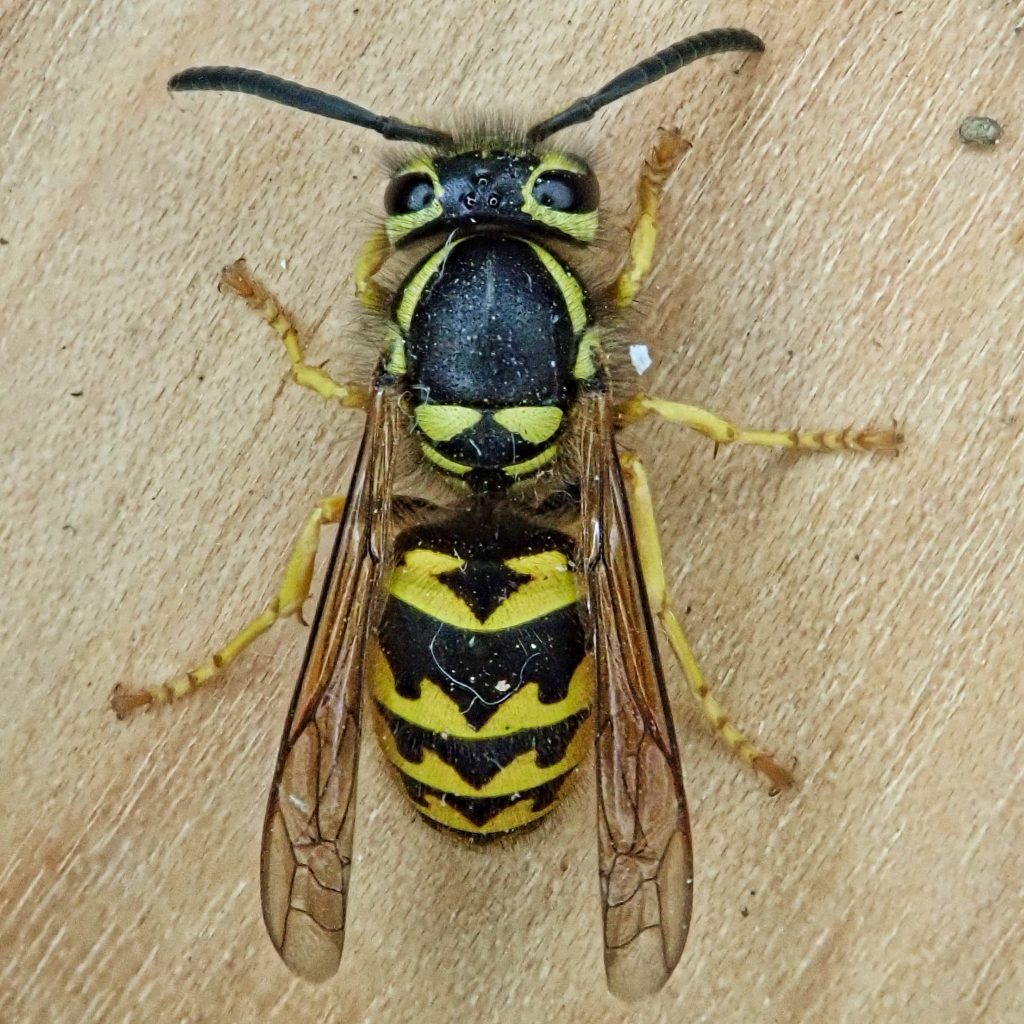
Despite all of the bad press they garner with foraging forays into backyard barbecues, Vespula pensylvanica is a very useful species in its native range, which includes all of temperate western North America. They are an important and rather relentless pollinator,and because of their resistance to many pesticides they are sometimes the most populous pollinator. They also prey on many insects that are costly agricultural pests, although, to be honest, since they are not a selective predator they prey on just as many beneficial arthropods. And there is no getting around the profound ecological impact they have where they are not native, particularly on island archipelagos such as Hawaii.
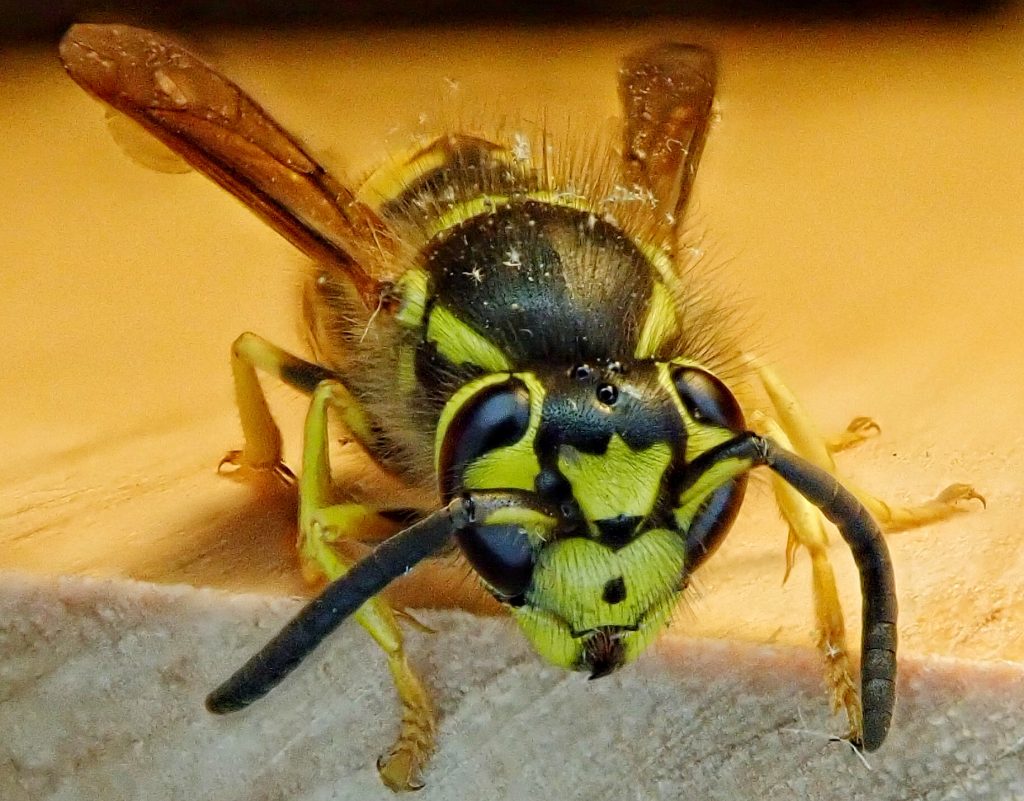
Western Yellowjackets are primarily ground nesters, but will sometimes build nests in logs, walls, pipes, and, rarely, eaves. The new queens emerge in late summer along with the males, mate soon after, and hibernate throughout the winter in sheltered spots. In the spring they become active, feeding on nectar and searching for a nest site. Nests are constructed of wood fibers, usually from weathered or decaying wood. After about 30 days the first workers emerge and take over the foraging and nest building/sanitation duties, and the queen retires to a life of reproduction. By late summer new queens and males are being reared, and leftover worker larvae are fed to them.
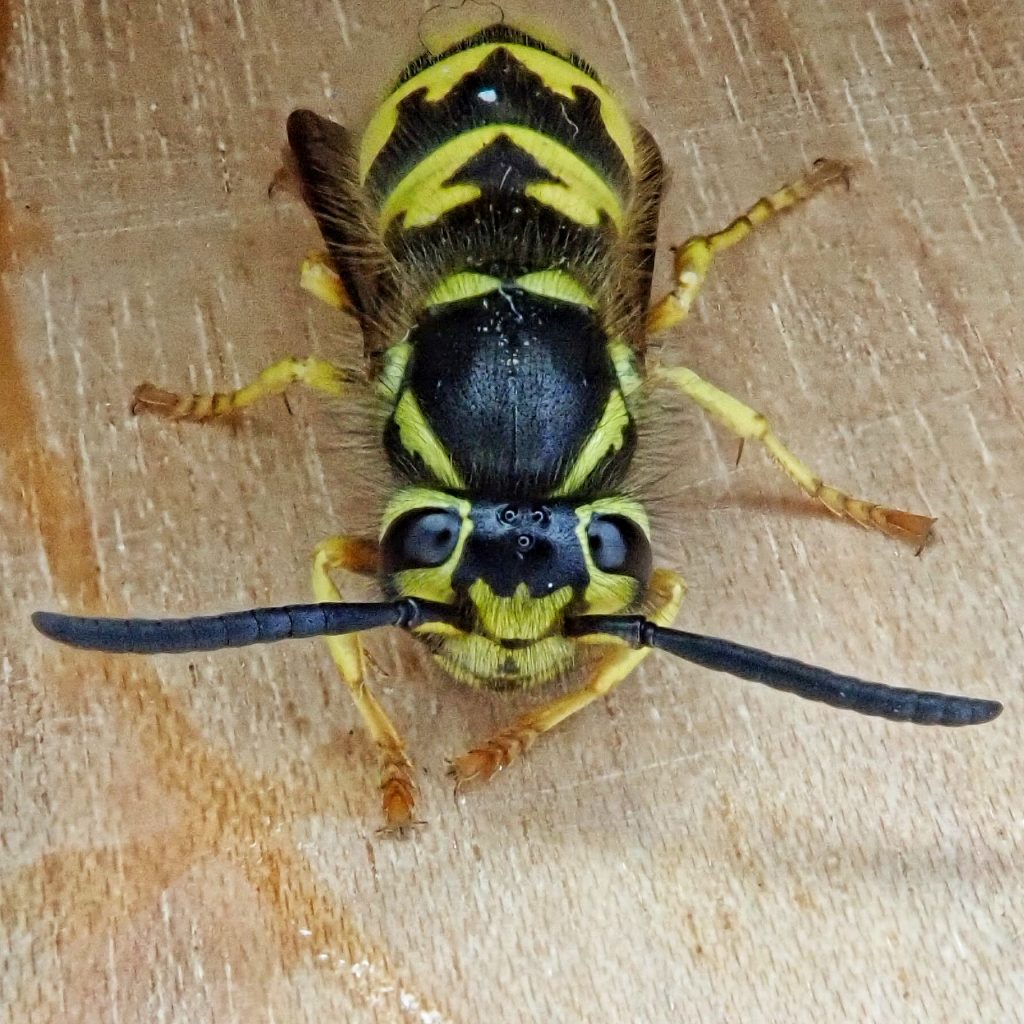
In warmer climes a colony may persist for several seasons with multiple queens, but in our region colonies are annual and are done by the first hard frosts.
Workers forage from first light to full dark, with peaks in mid morning and mid afternoon, and a lull at midday. Foraging consists of gathering liquid foodstuffs like nectar or fruit juices, or of maxalating prey or carrion until it is pulp. Vespula spp in general usually forage within 1000’ of the nest, although they are capable of flying much further.
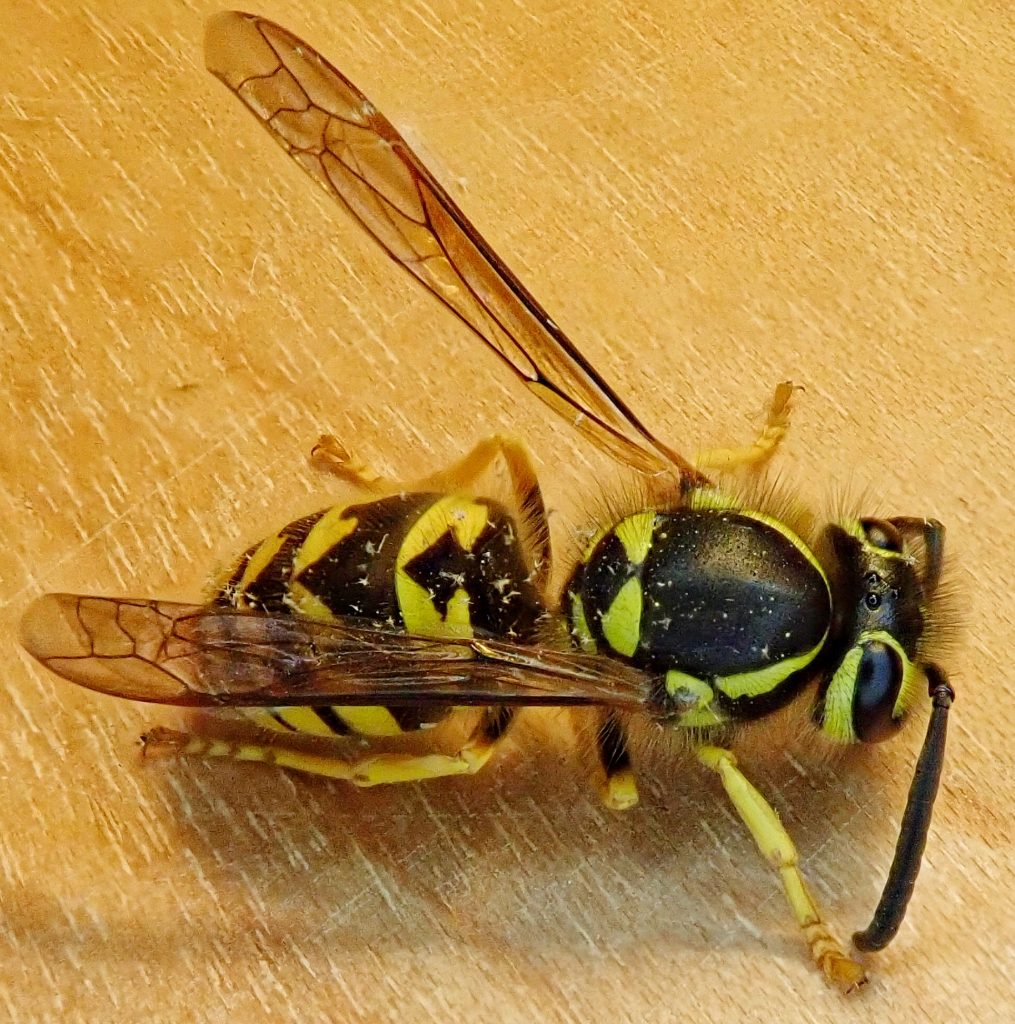
My experience with Vespula pensylvanica, and most other Hymenoptera for that matter, is that they don’t attack unless they are threatened. I have observed nest entrances for extended periods, and I have worked around large numbers of them (mostly while doing meat processing), without being stung, provided I did not attack their nest, swat at them, or accidentally trap one against myself. The exception is in the fall when they are feeding on fermented fruit. Drunken yellowjackets can be as aggressive and easily provoked as any other drunken animal.
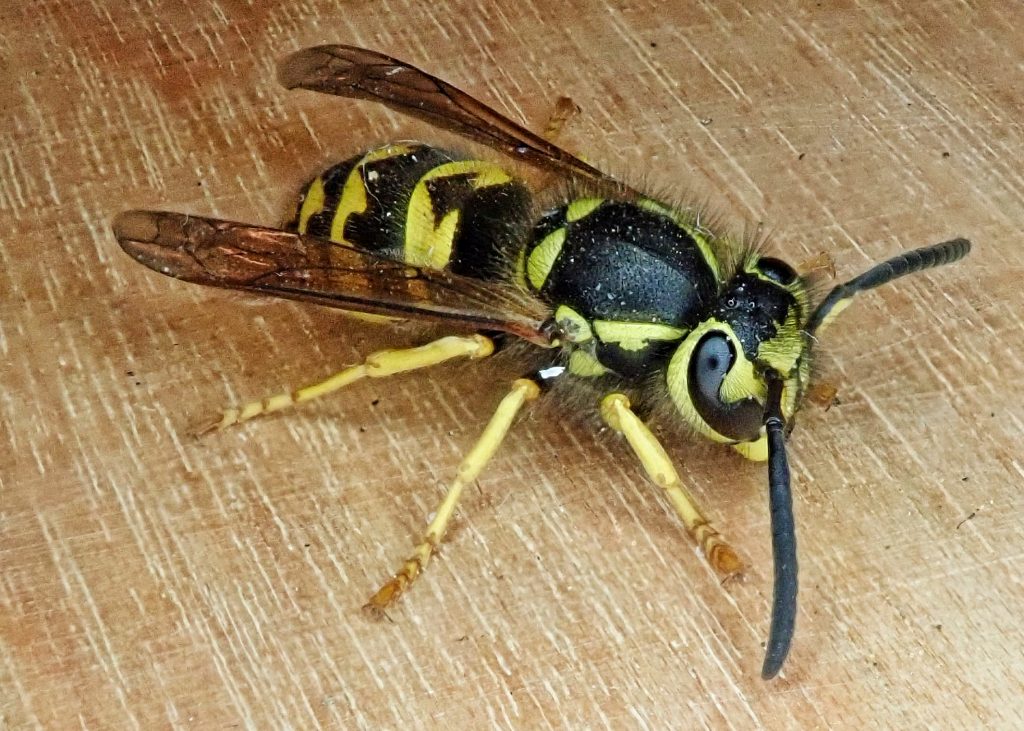
Description– Black and yellow body with almost as much yellow as black on the abdomen, paired yellow spots at the rear of the pronotum, and yellow lines along the anterior margins of the pronotum. The eyes are completely encircled by yellow.
Similar species–Vespula sulphurea is the only other species in our region with a complete yellow eye ring, but it has 2 parallel yellow lines in the middle of the pronotum, and only makes it into our region in sw Oregon/n California.
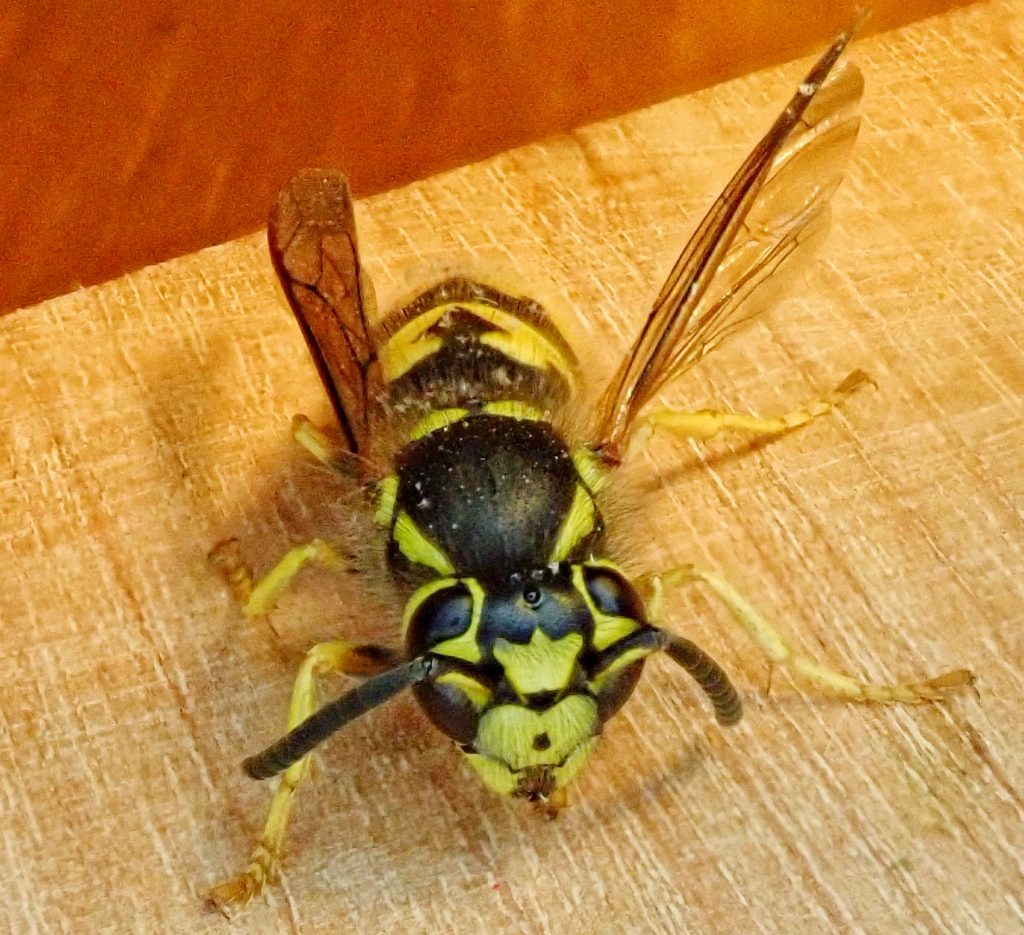
Habitat-Common wherever their are people and their garbage; non-anthropogenic colonies less common in the coldest and most arid parts of our region
Range– Region wide
Eats– Polyphagous. Hunts and scavenges insects and other arthropods, scavenges carrion, eats fruit, and takes nectar.
Eaten by– Bears, skunks, raccoons, badgers, shrews, and moles will raid their nests, particularly at night when the yellowjackets are sluggish, dining on the protein rich larvae. Linepithema humile (Argentine Ants) have been known to attack yellowjacket nests, but that doesn’t seem to be a common occurrence, and possibly is more related to territoriality than to foraging.
Adults active– March to October
Etymology of names– Vespula means ‘little wasp’. I can’t seem to confirm this but I’d guess pensylvanica refers to the holotype location.
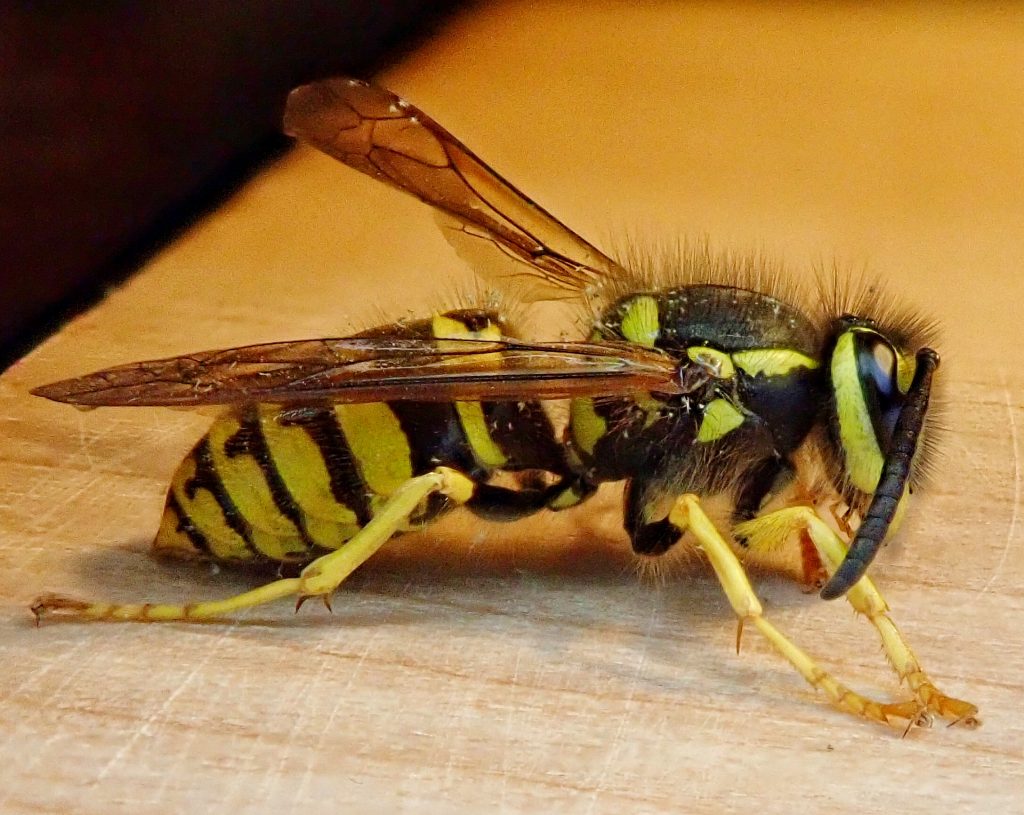
https://www.cabi.org/isc/datasheet/56670
https://bugguide.net/node/view/12981
http://cjai.biologicalsurvey.ca/bmc_05/94v_pensylvanica.html
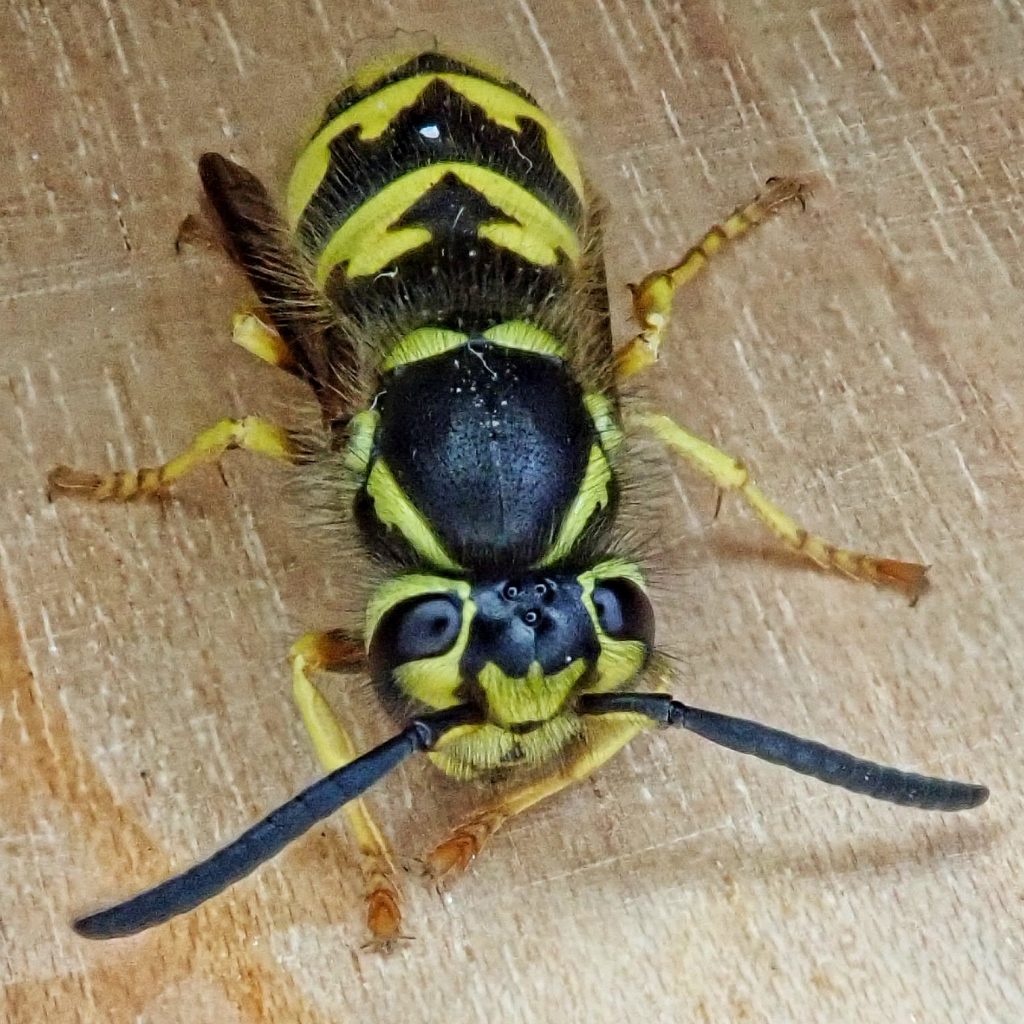
Fascinating – I guess because they descend when we are grilling meat, I didn’t even know they were pollinators. And your photos make them look really cute!
Excellent information; I appreciate that you explain everything in “layman’s terms”. This makes it so much easier to understand. I wish everyone knew how beneficial these pollinators are. Thank you for sharing.